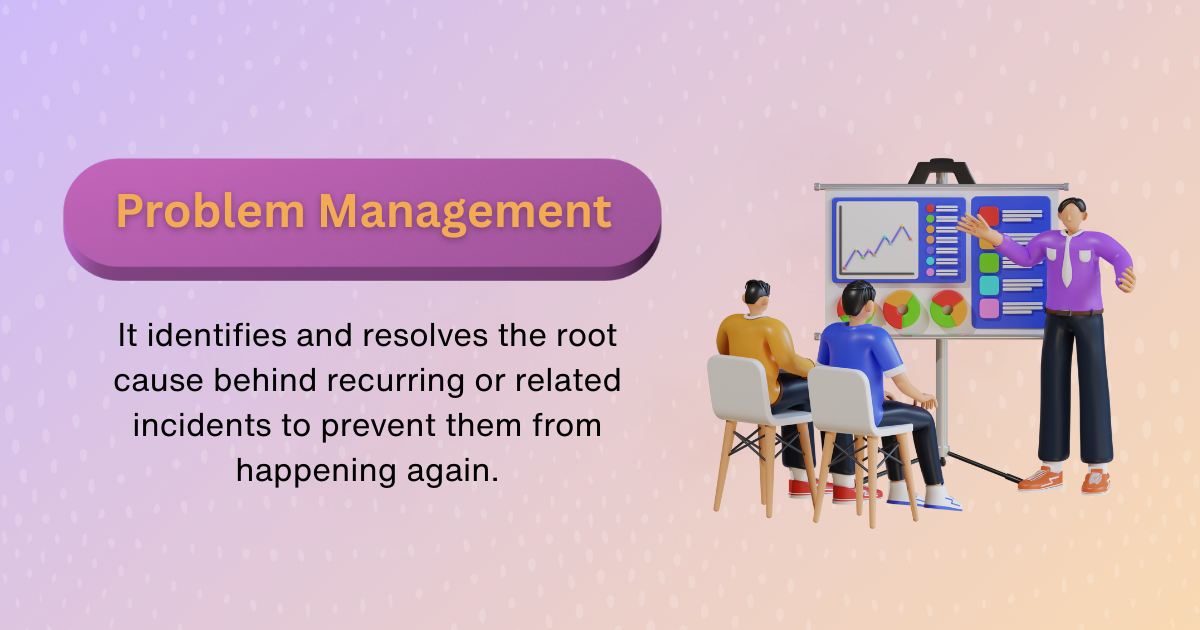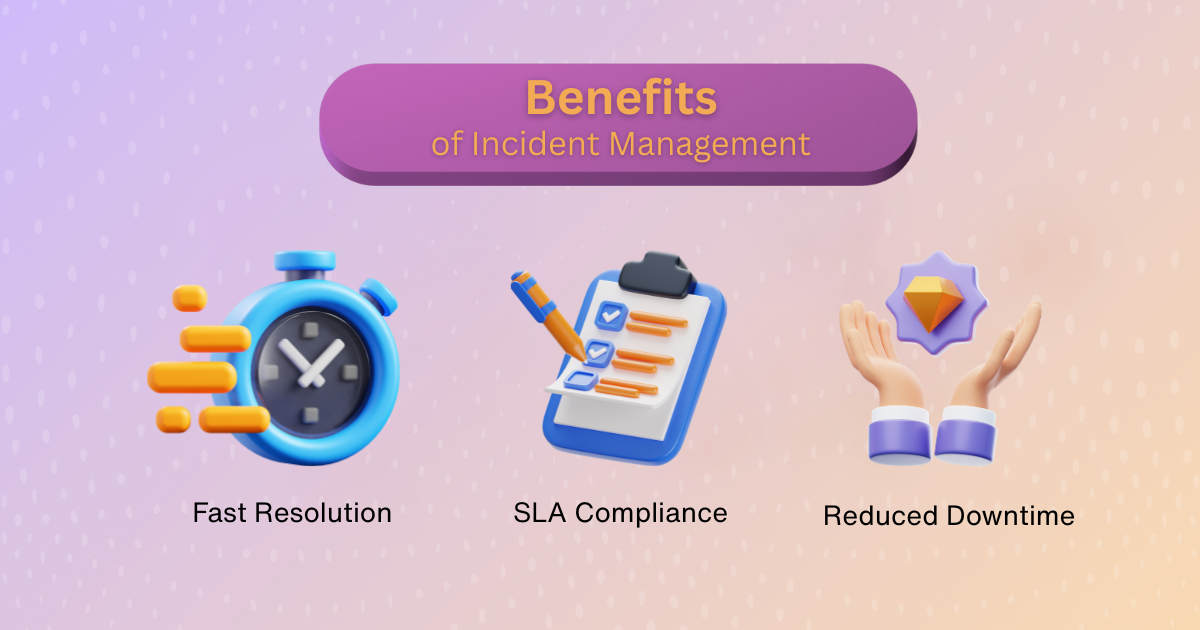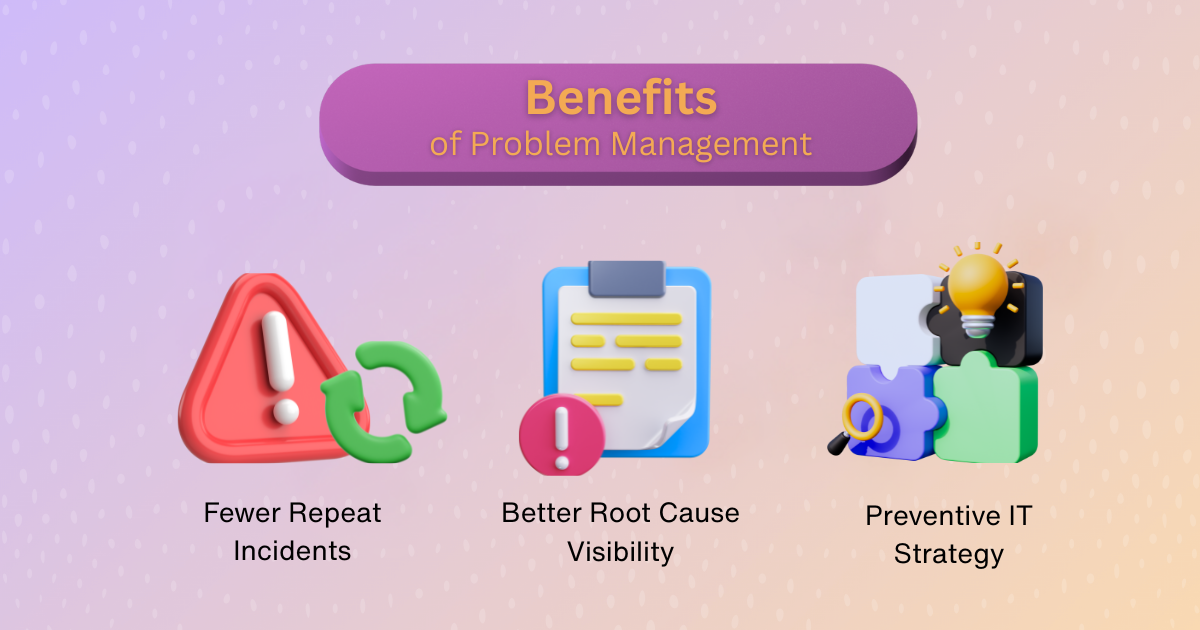

The Hidden Costs of Immature Incident Management
The start of a journey towards a mature SRE practice.
When things break, people look to you for answers—fast. Whether it’s a system crash, a service outage, or a nagging bug that keeps resurfacing, how you respond matters. That’s where ITSM comes in. It helps us turn chaos into coordination.
Among its most essential components? Incident management and problem management. One restores; the other prevents. And while they serve different purposes, they’re better together. Incident management brings systems back online fast. Problem management ensures the issue doesn’t return.

An incident is any unplanned disruption or degradation of service. It's the thing your team wakes up to at 2 a.m., the fire in the middle of a deployment, or the spike in support tickets from users who can't log in. In the ITIL framework, incident management is the process of restoring normal service operation as quickly as possible.
It’s not glamorous, but process is everything:

A problem is the underlying cause of one or more incidents. Where incident management asks, “How do we stop the bleeding?”, problem management asks, “Why did we start bleeding in the first place?”
Example: A database timeout may trigger several incident alerts. Fixing the timeout (incident management) doesn’t prevent it from recurring. Rewriting the query structure or refactoring the architecture (problem management) does.
An incident’s objective is to get things back to normal—quickly. The priority is speed, not necessarily full understanding. In contrast, a problem’s goal is to prevent the issue from happening again.
Incidents are triggered in real-time when something breaks or impacts users. Problem triggers come from patterns—repeated failures, trend analysis, or persistent symptoms. The former is loud and obvious; the latter, more subtle.
Incidents require immediate action to restore functionality and meet SLAs. Problems, while important, allow for deeper investigation over time. It’s a sprint versus a marathon.
A user login failure is an incident—it stops people cold. A recurring cache misfire under heavy load is a problem—it signals fragility under the surface. One gets fixed fast; the other needs root cause attention.
Incidents are typically owned by Help Desk or Tier 1 teams who restore service. Problems are escalated to Tier 2/3 engineers or SREs with system-level access. Responsibility shifts from operators to investigators.

Think of it this way: incident management patches the tire; problem management finds and removes the nail from the road.
Both are essential. One buys you time, the other buys you trust. Effective teams coordinate these roles intentionally. A well-run PIR (Post-Incident Review) almost always identifies a handoff moment—when the issue should have gone from incident to problem.
In an ideal world, your ITSM system creates a linked problem ticket every time a major incident closes. This makes it easier to follow through with the deeper fix.
A major outage brings everything to a halt and demands an immediate response. Your dashboards light up, teams mobilize, and the clock starts ticking. Incident management is your fastest path to recovery.
Any disruption to access, billing, or user data creates real friction. These issues affect customer trust and must be addressed on the spot. Quick action through incident management helps avoid escalation.
Service Level Agreements set the standard for uptime and responsiveness. If they're at risk, there's no time to hesitate. Fast incident resolution protects both your reputation and contractual commitments.
Recurring issues aren’t just annoying—they’re a signal something deeper is wrong. When fixes feel familiar, it's time to stop patching and start investigating. Problem management turns repetition into insight.
Small anomalies often foreshadow bigger breakdowns. Recognizing patterns before they escalate is the heart of proactive problem management. It helps teams stay ahead instead of constantly reacting.
Every incident leaves a trail of clues. PIRs are your chance to ask hard questions, connect dots, and build smarter systems. It's not just about what went wrong—but what you'll change going forward.

Quick action keeps services online and customer satisfaction high. Users experience minimal disruption, and confidence in your systems stays intact. A swift fix reduces stress across the board.
Meeting SLAs protects your credibility and prevents financial penalties. It reflects your team's reliability under pressure. Incident management helps hit those targets consistently.
Downtime erodes trust and drains resources. The less time your team spends firefighting, the more time they can spend building value. Fast incident response lets teams shift focus from crisis to progress.

Temporary fixes might hold, but they don’t last. Problem management digs deeper to solve the root cause, eliminating recurring disruptions. Over time, this reduces support burden and builds system stability.
Understanding what truly broke means fewer surprises later. Visibility into the core issue allows leaders to make informed, strategic decisions. It shifts teams from guessing to knowing.
Problem management turns hindsight into foresight. By learning from past issues, teams can build systems that anticipate and withstand future ones. It helps create a culture where prevention is just as important as resolution.
How to solve: Automate triage, normalize severity scales, and build smart alert routing.
How to solve: Invest in observability, create structured RCA frameworks, assign cross-functional leads.
Use AI and machine learning to intelligently route tickets based on priority and type. This reduces manual triage and helps surface the right issues to the right teams. Smarter routing clears the queue and improves resolution time.
A centralized, easy-to-navigate knowledge base empowers teams to solve recurring issues faster. When fixes and RCA insights are documented well, they're reused more often. Less guesswork means fewer escalations.
Every team member should know when to escalate and to whom. Defined pathways prevent bottlenecks and reduce finger-pointing. Clear boundaries help incidents move smoothly through the resolution process.
Surface-level fixes aren’t enough—engineers must be equipped to uncover what really caused the issue. Structured RCA training fosters deeper thinking and better outcomes. It turns every incident into an opportunity to strengthen systems.
Shared dashboards bring visibility to key metrics like MTTA, MTTR, and recurring problems. They create alignment across teams by showing what’s working—and what’s not. Consistent data helps drive smarter decisions and faster improvements.
Effective collaboration doesn’t happen by accident—it’s built through shared rituals. Blameless retrospectives, transparent handoffs, and clear documentation keep everyone informed and engaged. The result is smoother coordination and fewer dropped balls.
Escalating an incident into a problem shouldn’t rely on gut instinct. Standardized communication flows, consistent terminology, and decision trees make the process predictable. Clear expectations build trust and speed up outcomes.
The boundary between incident and problem management doesn’t have to be complicated—it just needs to be clear. Incidents need speed. Problems need depth.
Each serves a different purpose, but together, they build stronger, more resilient operations. We've seen that the more intentional the connection between the two, the less room there is for surprises.
If you're ready to tighten your handoffs and build smarter workflows, check out Rootly—we’re here to make your incident and problem management seamless.